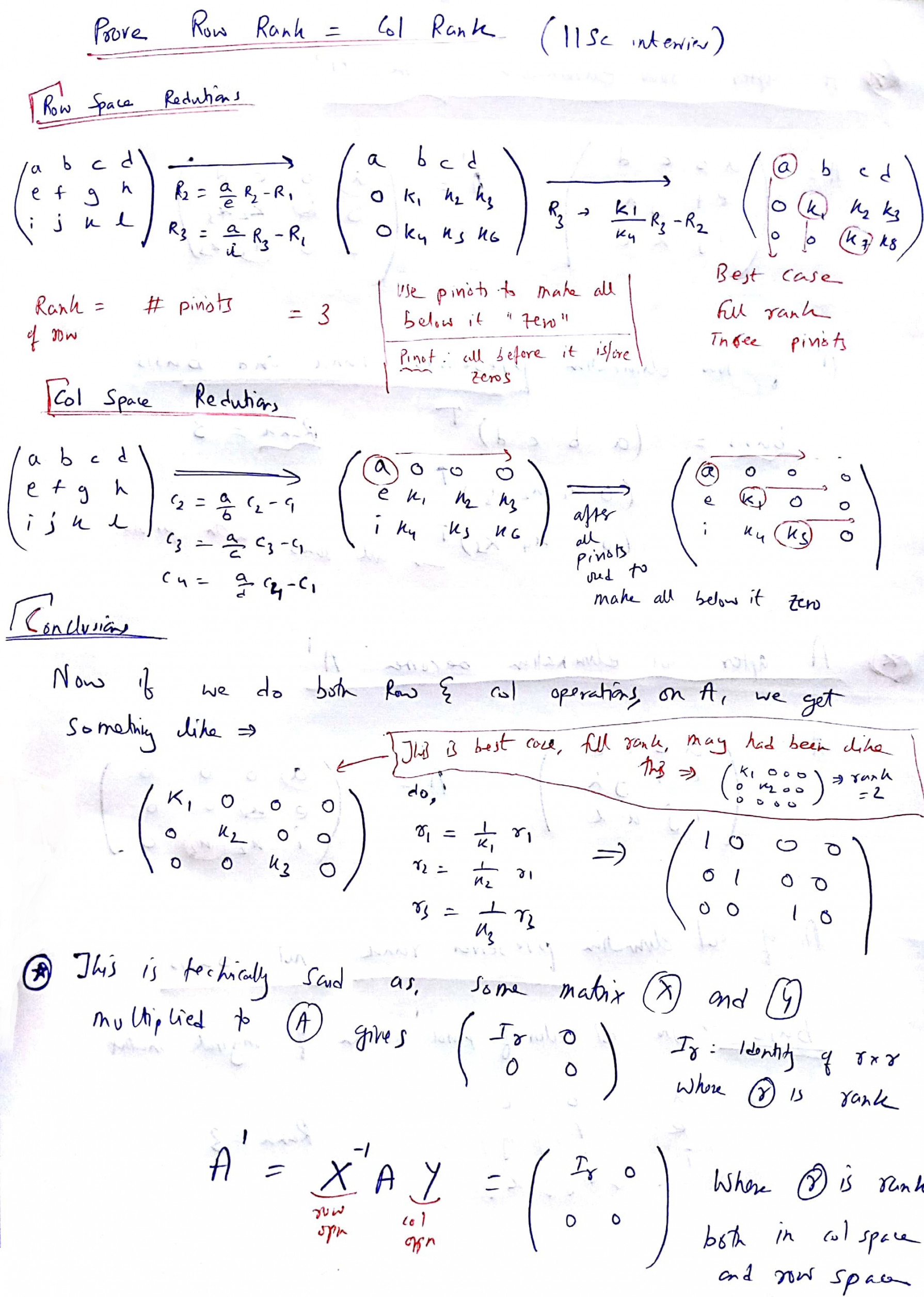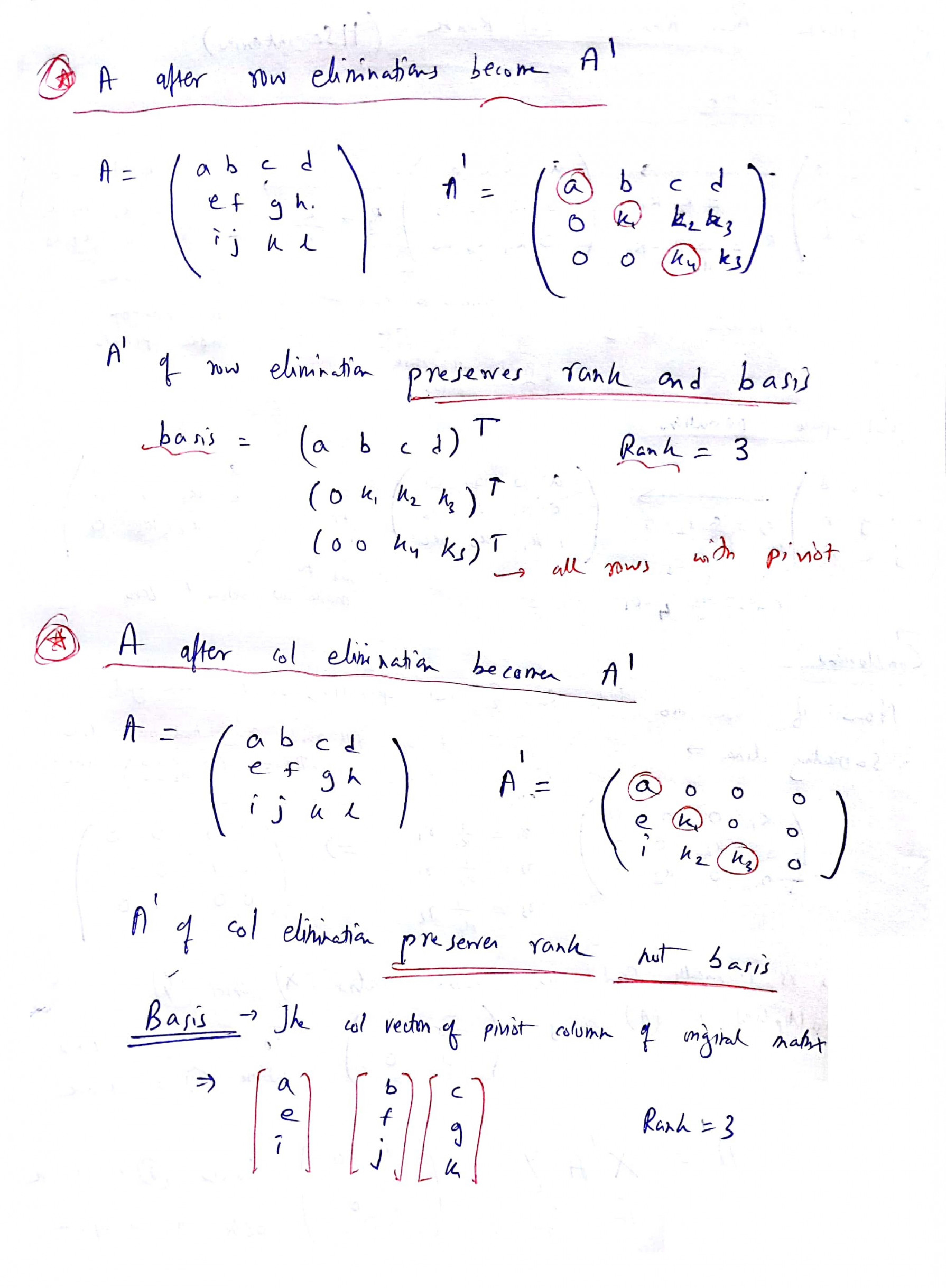Gate score:690 (GATE CSE), Marks:62.67
Date: 20 April 2023
B.tech: Major in Mechanical and Minor in CSE
There were two professors, read out my details, they had asked to make a ppt presentation before a week, regarding all projects and other things you want to share in the interview.
1. Asked to say about projects
M: Explained, not so well tough, this was the first ever interview and I had no good idea how to present. (Projects: Final yr projects and some app and HTML/CSS website I made)
[[ Well, I made my project during second wave of covid and I'm from mechanical background, I hardly managed to go to a foundry shop and do some nonsense, well this sounds like an excuse, so I did not say this ]]
They also asked about the minor in CSE that I had, which I explained.
They asked what rank you had in college, I said we had no concept of ranking in college.
Technical part
1. Define rank of a matrix
M: Wrt. column space, no of independent cols we have is the rank, and wrt. row space, same thing
2. Is rank in col. space and row space same?
M: Yes in square matrix (I said) (It's actually same for rectangular matrices too)
3. Prove it
M: I said, if we transpose, row become col and vice versa, and since rank of A and A transpose are same, the rank should be same. They were not at all satisfied with this answer, Like the professor would have punched me for this answer, if it was allowed : )
Next I explained the answer with help of geometry, If I loose a dimension we'll be able to place a vector of a reduced dimension. So rank must be min of MxN, I explained with a 3×4 matrix with abstract values, here they said, what you're trying to say is correct, but we need a proper mathematical derivation.
Then they tried to give a hint, convert to echelon form, but I was dumb enough to not get the point.
Take a matrix, they said, I took this:
$\begin{pmatrix} a & b & c & d\\ e & f & g & h\\ i & j & k & l \end{pmatrix}$
Now he said, I want to remove the forth col “d h l”, Can I do it?
I said “Yes” cause we have max rank 3 and, 3 basis are sufficient fo it, so we can eliminate one of the 4 columns. Well, he was not satisfied.
Now he said to reduce it, even tough it was possible to work with a abstract matrix, in that pressure, I said I want to take another matrix with numbers and now took this.
$\begin{pmatrix} 1 & 2 & 3 & 4\\ 5 & 6 & 7 & 8\\ 9 & 10 & 11 & 12 \end{pmatrix}$
As soon I was done writing the matrix, he said me say it’s rank immediately, within seconds, I said 3, he was not satisfied, said to do “R3=R3-R1” and “R2=R2-R1”, Well, now I figured out what was wrong, now he asked what’s the rank, I said “It’s one”, he said what one???
I took some seconds and said, it’s two for sure. Well out of all possible 3 answers, I said all of them, one would have been definitely right, this thing was quite embarrassing.
4. Prove, if we raise the power of a matrix, the eigen values are also raised to power.
I proved with the diagonalization formula, but then he said to prove using basic (AX= λX) I did both.
5. Is every matrix diagonalizable?
M: No, if det (A) =0 it's not, realizing after some seconds I'm terribly wrong, then I said no the matrix with eigen value, then he pointed out "is it eigen value"
No I said, it's the matrix with eigen vectors (it's always easy to confuse with eigen value and vector)
Then he asked what I want to do if I join robotics
I said, want to do the programming part, again pretty dumb (maybe it could have been better to say controller codlings like using ROBOML, etc)
So, here it ends and I left the room.
I finally figured out the actual derivation of the thing (raw rank equals col rank) I will put it in simple terms here, the hard one you'll find it in the net, anyway…
It goes like this:
- Piviot Defination: All before the piviot must be zero
- Change the Matrix to, RREF (Row reduction Echelon Form) [ See we always have a linear transformation who can do this task by multiplying it to the original matrix ‘A’ ]
- Change the Matrix to, CREF (Col reduction Echelon Form) [ See we always have a linear transformation who can do this task by multiplying it to the original matrix ‘A’
- When we are done this the matrix always changes to something like this [ and always use piviots to do reduction ] « This is important
After RREF, we get something like this:
$\begin{pmatrix} a & b & c & d\\ 0 & k1 & k2 & k3\\ 0 & 0 & k4 & k5 \end{pmatrix}$
or like this : $\begin{pmatrix} a & b & c & d\\ 0 & k1 & k2 & k3\\ 0 & 0 & 0 & k5 \end{pmatrix}$
or like this : $\begin{pmatrix} a & b & c & d\\ 0 & k1 & k2 & k3\\ 0 & 0 & 0 & 0 \end{pmatrix}$
Similarly do CREF on this and we’ll end up only with piviots, like this:
This is best case full rank : $\begin{pmatrix} a & 0 & 0 & 0\\ 0 & k1 & 0 & 0\\ 0 & 0 & k5 & 0 \end{pmatrix}$
Or like this (here we loose a rank): $\begin{pmatrix} a & 0 & 0 & 0\\ 0 & k1 & 0 & 0\\ 0 & 0 & 0 & 0 \end{pmatrix}$
In tough maths we say it like this: We multiply two matrices, say X and Y with A as, A’ = $X^{^{-1}}A Y$
Doing this we get something like: $\begin{pmatrix} I & 0\\ 0 & 0 \\ \end{pmatrix}$, The dimension of I is ‘r’ which is rank and is same wrto both row and col.
Fingers crossed, mostly will not get selected, but was a good experience, and there are bed bugs at Bangalore, better take good hotel, I hardly slept the last night and my eyes were red, the professor asked me once, did you not sleep or something, I said no I slept, I thought, maybe it's not so wise to make excuses.
Verdict: NOT SELECTED
The derivation of (Row Rank = Col Rank)
Formal one: https://ocw.mit.edu/courses/18-701-algebra-i-fall-2010/dfd72d3d4a11988c2335b5e9a79ce48b_MIT18_701F10_rrk_crk.pdf
My notes:
one correction: echlon form is always of the form: R2 = R2 - (k * R1) , I did this a bit wrong here


